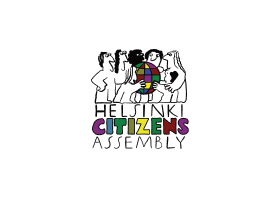Հաստիքի անվանումը
Իրավաբան (Իրավական վերլուծությունների և նախաձեռնությունների բաժնի մասնագետ)
Հիմնական պարտականությունները
▪ Մասնակցել դատական նիստերի մշտադիտարկման ուղեցույցների, հայեցակարգերի, հարցաշարերի մշակման աշխատանքներին
▪ Կատարել ազգային օրենսդրության վերլուծություն և գնահատում՝ ըստ արդար դատաքննության իրավունքի միջազգային չափորոշիչների
▪ Ստուգել մշտադիտարկողների կողմից մուտքագրված հարցաթերթերը
▪ Ամփոփել մշտադիտարկման տվյալները և կազմել տեղեկանքներ
▪ Մասնակցել ծրագրով նախատեսված միջոցառումների (դասընթացներ, քննարկումներ) կազմակերպչական աշխատանքներին
▪ Տվյալ պաշտոնի հետ կապված այլ պարտականություններ:
Ներկայացվող պահանջներ
☑️ Բարձրագույն իրավաբանական կրթություն
☑️ Աշխատանքային փորձ իրավաբանության ոլորտում (աշխատանքային փորձը դատական ոլորտում կդիտվի որպես առավելություն)
☑️ «ԴատաԼեքս» դատական տեղեկատվական համակարգում աշխատելու կարողություն
☑️ Վերլուծական հմտություններ
☑️ Համակարգչային հմտություններ
☑️ Հայերեն լեզվի գերազանց իմացություն, անգլերենի իմացությունը կդիտվի որպես առավելություն
☑️ Մարդու իրավունքների մասին գիտելիքներ և արժևորում
☑️ Հաղորդակցվելու հմտություններ, թիմում աշխատելու կարողություն
☑️ Պատրաստակամություն՝ մասնակցելու մասնագիտական վերապատրաստումների
☑️ Արտաժամյա աշխատանք կատարելու պատրաստակամություն
Կազմակերպության սկզբունքն է` հավասար աշխատանքային հնարավորություններ բոլորի համար, որը հիմնված է անձնական կարողությունների և որակավորման վրա՝ բացառելով որևէ խտրականություն` սեռի, տարիքի, ազգային պատկանելիության, առողջական վիճակի, սոցիալական վիճակի, ռասայի, մաշկի գույնի, սեռական կողմնորոշման կամ կրոնի հիման վրա: Սա վերաբերում է բոլոր գործողություններին և գործընթացներին, ներառյալ անձնակազմի ընտրությունը, ներգրավումը, աշխատանքի ընդունումը, աշխատանքից ազատումը, աշխատանքի նշանակումը, փոխհատուցումը կամ միջանձնային հարաբերությունները:
�� Աշխատավայր՝ ք. Երևան, Կոմիտաս 32 կամ ք․ Վանաձոր, Տիգրան Մեծ 59
⏰ Աշխատաժամեր՝ 9:30-18:30
Դիմելու կարգը
Ուղարկել հայերեն լեզվով ինքնակենսագրական և նախկինում կատարած իրավական վերլուծություն կամ ոլորտին վերաբերելի այլ աշխատություն` hr@hcav.am էլ. փոստի հասցեին՝ վերնագրի դաշտում նշելով՝ Օրենսդրական վերլուծությունների և նախաձեռնությունների բաժնի մասնագետի թափուր հաստիքի համար, մինչև 2023 թ. հունիսի 4-ը:
☑️ Ընտրված թեկնածուները կհրավիրվեն հարցազրույցի:

